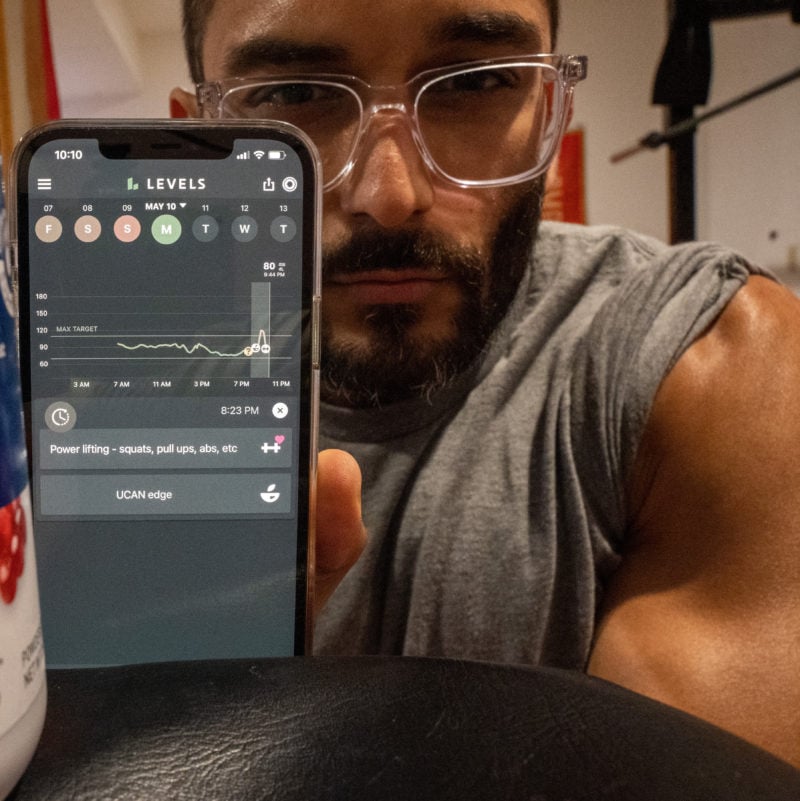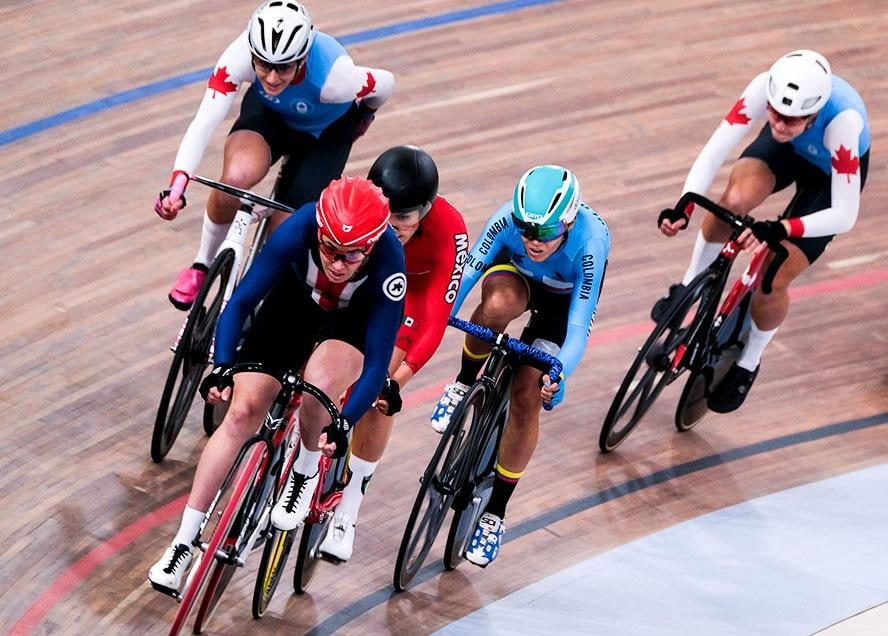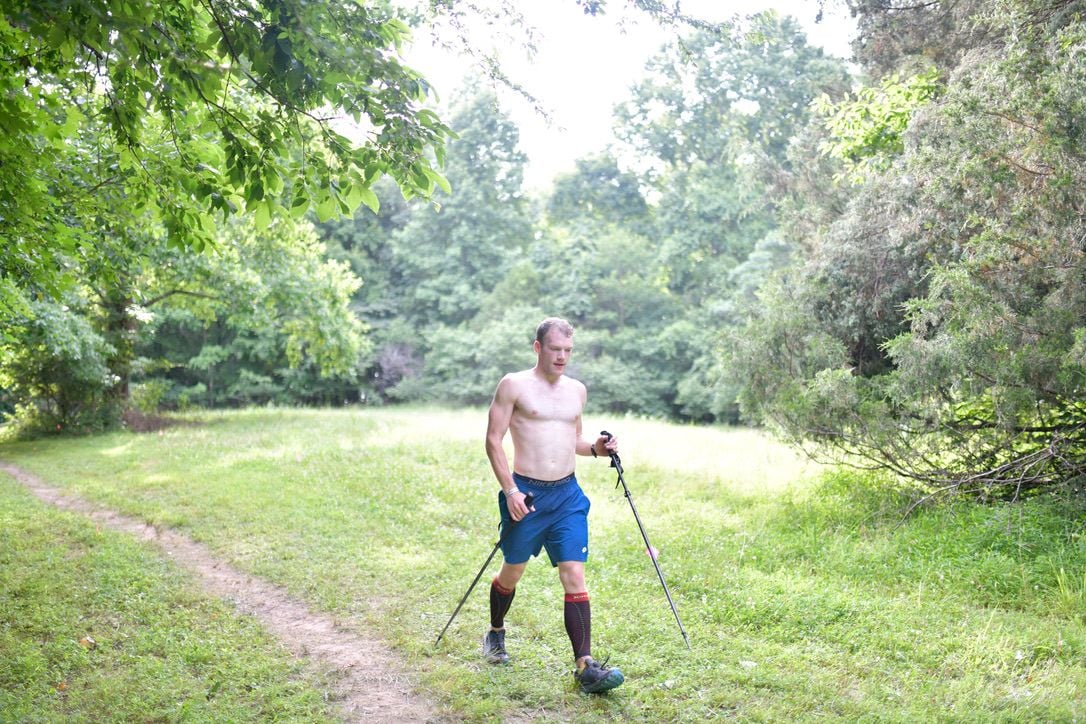In addition to being a doctor of chiropractic, Kamraan Husain is also a fitness model, a certified strength and conditioning specialist, aspiring actor, and gym owner. So he has a very sharp sense of how his body is functioning at any moment. He’s also very precise about his diet and training.
Both of those qualities proved valuable when Kam this year followed the traditional practice of fasting from dawn to dusk for 30 days in observance of the Muslim holy month of Ramadan. During that time, he continued to train and used Levels to log his blood sugar and see what 30 consecutive 24-hour fasts—including no water—did to his glucose processing. Here’s what he learned.
Ramadan is the holiest month of the year in Islam, a time of dedication and focus, to let go of our “worldly matters” and tap into our faith. Part of that process is forgoing any food or drink from sunrise to sunset.
When I thought about training through Ramadan, I realized two things would be necessary to maintain my fitness, health, and sanity—first, acknowledging that I may not be able to train the entire month at a high intensity. Second, knowing that I had to try to stay consistent with my calories and water during the evening hours so my weight and blood sugar didn’t ping-pong all month. (I typically aim to get 2,000 calories per day and do functional and performance athletic cross-training five to six days per week at my gym, The Workout KC [TWKC]).
Maintaining optimal health during this process was crucial for me. A big reason I have built my career and my lifestyle around my health is because of my father. Now 59 years old, he had a double bypass heart surgery at 36 and multiple strokes and seizures in the last few years. Unfortunately, that’s left him with some disability, including aphasia (cognitive inability to speak). I am determined to do everything I can to avoid that fate.
I started preparing myself for Ramadan about three weeks before it began. I would fast on a Monday or Thursday and pick a different training time to see how my body responded. For example, I tried training at 3 or 4 AM, fueling right after, and then fasting the rest of the day. I also tried exercising in the evening, before and after I broke my fast.
From those tests, I decided to train almost exclusively in the evening after breaking my fast with a small snack, but before my evening meal. On that schedule, I felt I could get through my workout better, and I didn’t feel hindered. I also kept better mental clarity.

Days 1-10: Starting Strong
I started the first 10 days with a head full of steam. I was motivated and excited to actively track my diet, train my body, and tap into my faith with five daily prayers. My schedule went like this: I broke each day into “feeding” periods: one in the morning and one in the evening. I woke up at 4:30 am (before sunrise) and drank one serving of a protein and super starch mix from UCAN (a company I work with) in 12 oz of water. That was my fuel to start the fast.
I also drank about 64 oz of water after the UCAN. (Anytime I could drink water, I was pounding it, and that seemed to work. Surprisingly, I never felt thirsty or like I had a dry mouth throughout the day.) Immediately after taking the UCAN, I would see a slow rise in my blood sugar to around 120 mg/dL, and then it would ease back down as I began the fast.
After morning prayer, I’d go back to sleep for another four or five hours (fortunately, my schedule is pretty flexible).
For this first third of the month, my energy levels felt steady during the day, and that reflected in my blood sugar levels: they averaged around 80-95 mg/dL throughout the day; very stable.
“Using a CGM throughout the process helped me understand that I was OK during the extended periods of my fast, that my blood sugar was healthy. This awareness and reassurance allowed me to focus even more intensely on my spiritual journey of Ramadan. For me, not feeding my body helped feed my soul.”
Around 8 pm, I would eat one or two dates with a glass of water, which is the traditional way to break the fast. I found that in my fasted state, I could eat one date without much of a blood sugar rise, but if I got excited and had two, I’d see a spike.
Then I’d pray evening prayers and prepare myself for training. I’d have another serving of UCAN SuperStarch and get to work. During this first phase of Ramadan, my training felt strong, especially during my powerlifting and speed training circuits at TWKC.
After training, I’d have my one meal of the day. I kept my diet consistent with what I ate outside of Ramadan because I was curious how my body would respond. My meals included chickpeas and ground beef, grilled chicken, Atlantic salmon and peppers, and lentils and stew meat. On the weekends, I occasionally had a cheeseburger (no bun) with lettuce, tomatoes, pickles, and onions.
During this first phase of evening Ramadan meals, my blood sugar steadily rose to 100-110 mg/dL. In bed by 11:30 pm–12 am, getting 6–8 hours of sleep (albeit broken up by morning prayers). Since I usually ate right before bed, my overnight glucose varied throughout the night but never went out of the range of 70-110 mg/dL. The worst night I had was when my workout got cut short, so there was too little time between the UCAN and my meal; I climbed to around 115 mg/dL and stayed high all night.
By the end of the first 10 days, I felt great. I had my schedule down, my energy and my workouts were strong. I thought, “I got this.”
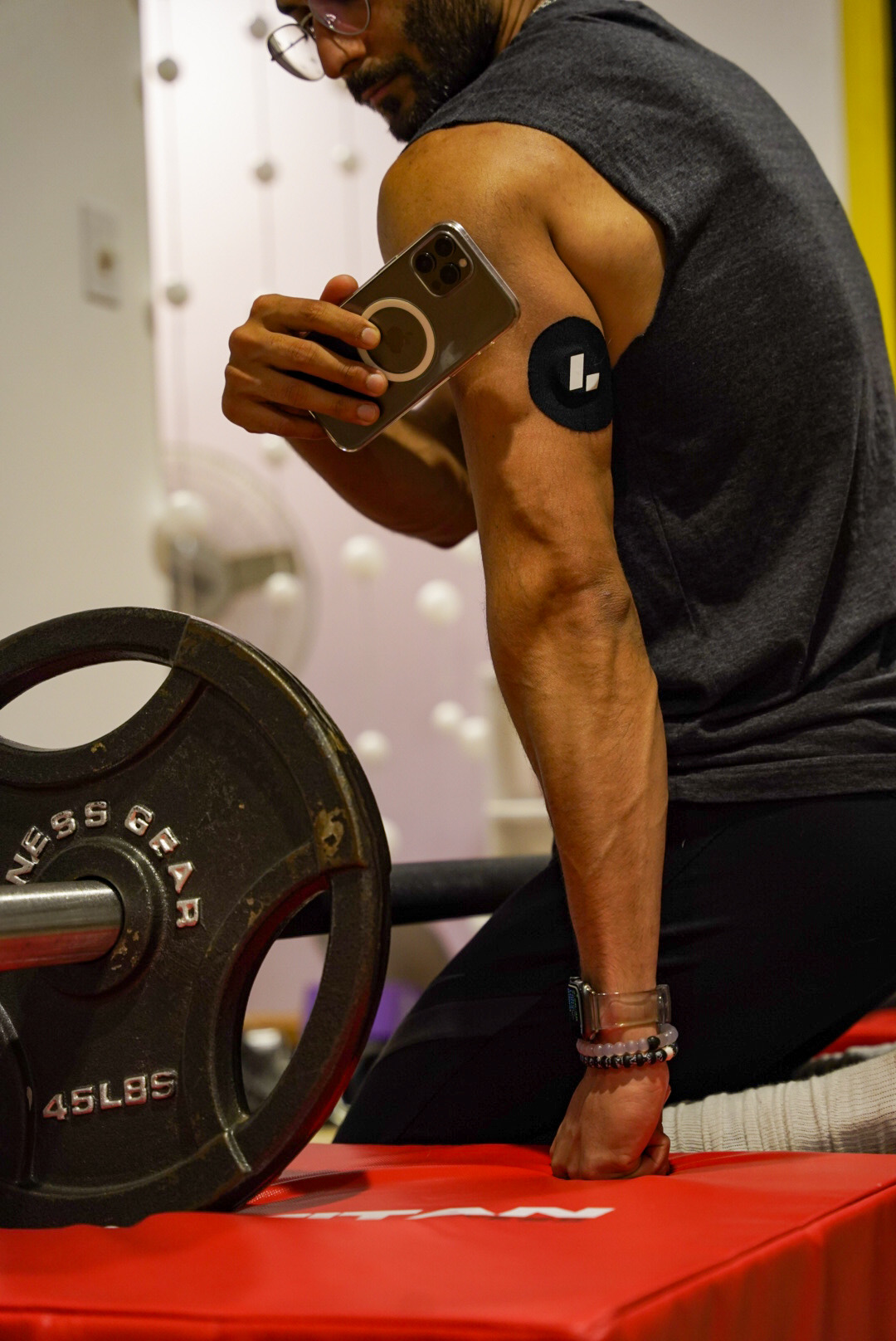
Days 11-20: Hitting the Wall
Right around day 13, I hit the wall. I felt burnt out, and I was struggling. I was eating the same foods—chickpeas, grilled chicken, boiled lentils, ground beef, and various vegetables (peppers, asparagus, and okra)—but I felt like my body was fed up. I was fatigued, my sleep was off, and I struggled with my mood.
Training had also taken a toll on me. I knew coming into Ramadan that I might not be able to keep my same working intensity, but during those first 10 days, I did, and I felt great. By two weeks in, that was no longer the case. I felt like a zombie in my workouts. I got through it by dropping the weight and focusing more on technique, just working on form and function.
I could see this energy deficit in my blood sugar levels: It was still steady during the fasting period, but in the evenings and overnights, I noticed more significant increases (as high as 126 mg/dL) and dipped lower than I’d gone before, down to around 70 mg/dL or below, despite eating the same types of meals as days 1-10. I am not clear about the exact reason for this change, but I imagine it might have to do with the added stress on my body from extended fasting and continuing my workout regimen, and worse sleep quality during this period because of the way my body was feeling.
I also gave up caffeine for these 30 days, and whether that played a role or not, that’s what this middle period felt like: when you’re accustomed to drinking coffee and then skip it. My body felt off.
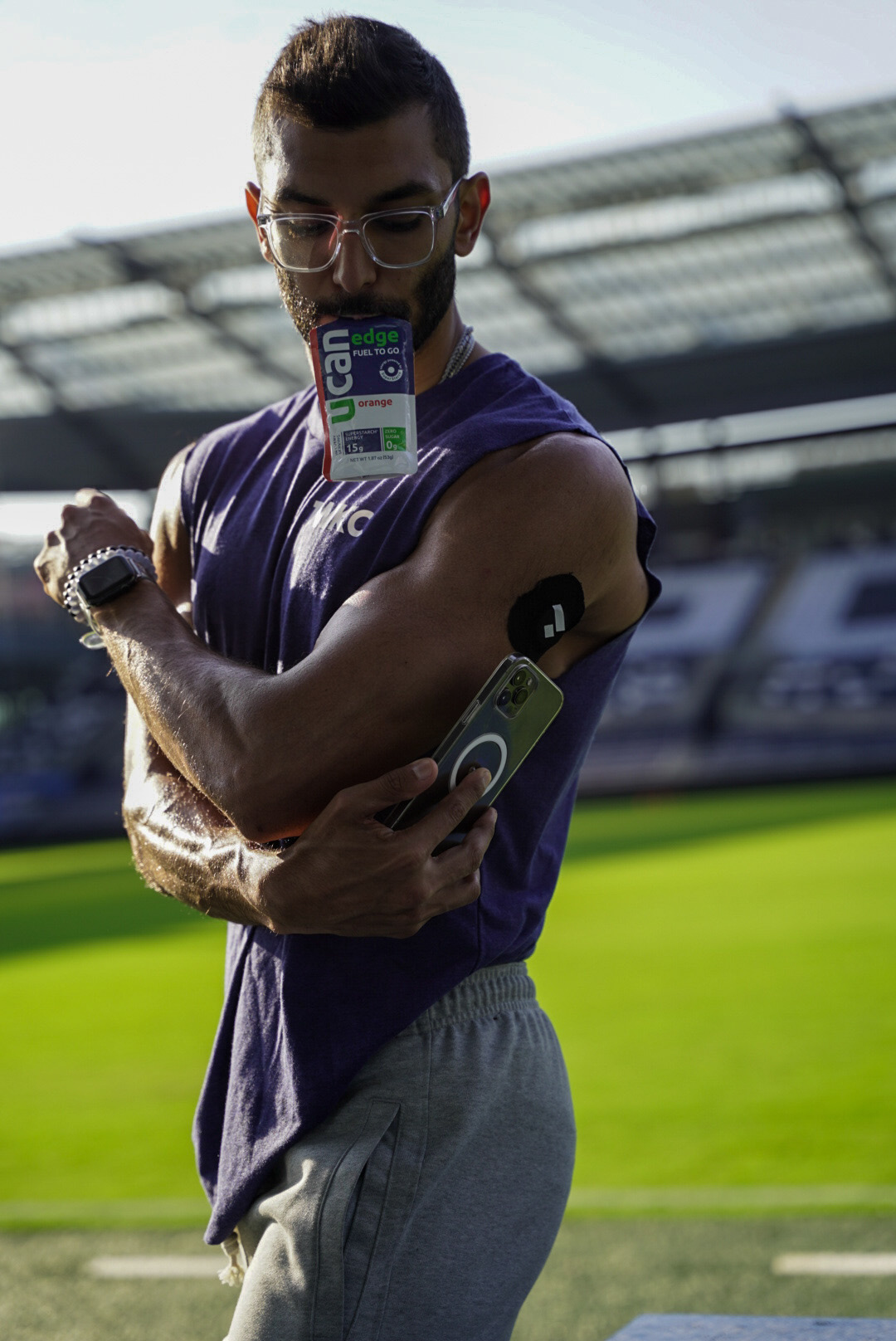
Days 21-30: Finding the Rhythm
By the final 10 days, I felt numb, but in a good way—I wasn’t thinking about the fast anymore. What I thought would be the most difficult days were actually the easiest. I felt like my body was in full adaptation mode.
Routine had become everything. I was consistent with my morning prayers, UCAN, healthy, balanced evening meals, and sleeping through most of the morning.
My dinners became lighter, and my cravings and hunger decreased significantly. I felt almost full after a date and a glass of water. I continued to train but now stuck to bodyweight or very lightweight movements and slower tempo, focusing on eccentric exercises and function.
In this last period, my sleep cycle and energy levels dramatically improved from the middle 10 days. I felt more rested throughout the day and didn’t feel the sluggish residual I had been experiencing. Although training intensity and food intake decreased (down to around 1200 calories a day, driven by less hunger), my blood sugar remained consistently in range: never below 70 mg/dL or above 120 mg/dL.
Conclusion
By the end of Ramadan, my weight had dropped from 175 to 160. I noticed my veins were more visible, probably from the weight loss. And I have had a drop in strength. Now, I’m slowly restoring that weight and strength and continuing to fast once a week—though for a shorter window and with water!
After 30 days of consistent fasting, while continuing to train and monitor my diet, I came to see the value of self-discipline. And that hunger is such a perfect example of self-discipline. If you can overcome such a primal force and calmly control how you eat and drink, you can have an easier time managing other aspects of your life.
Using a CGM throughout the process helped me understand that I was OK during the extended periods of my fast, that my blood sugar was healthy. It helped me understand how the foods I used to start and break my daily fasts impacted my body. I imagine that if I had chosen foods that caused large blood sugar spikes in the morning or evening, I would have felt worse and had cravings that would have made the journey more difficult.
This awareness and reassurance allowed me to focus even more intensely on my spiritual journey of Ramadan. For me, not feeding my body helped feed my soul.
